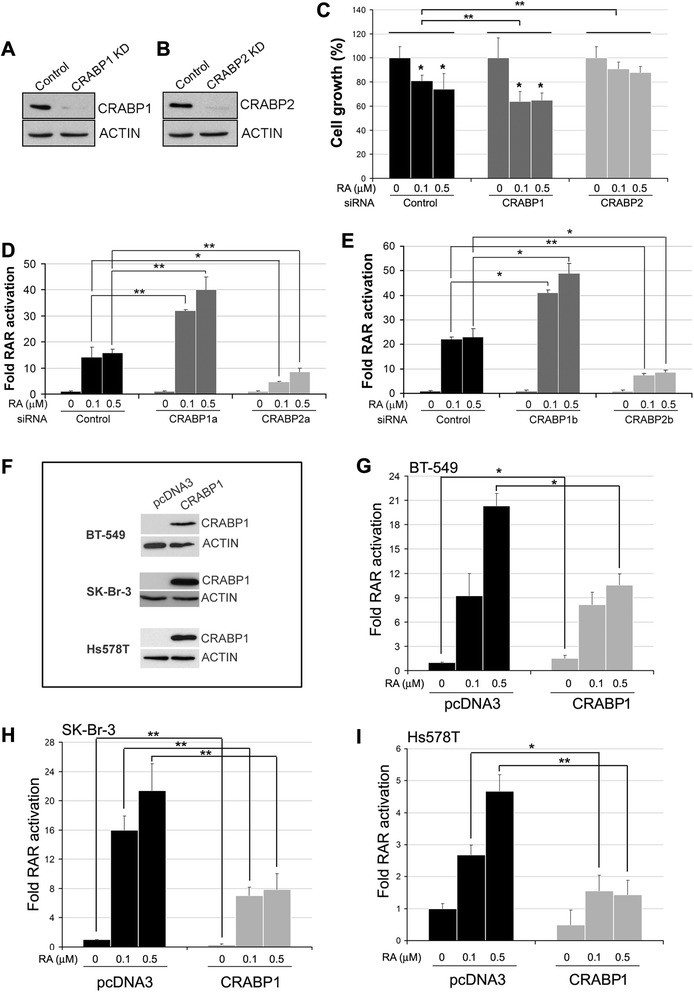Fig. 4.

CRABP1 and CRABP2 differentially modulate RA-induced growth inhibition and RAR transcriptional activity. a, b Western blot analysis of MCF-7 cells transfected with CRABP1 or CRABP2 siRNAs using antibodies against CRABP1 or CRABP2. c Relative growth rate of MCF-7 cells treated with the indicated concentrations of RA after transfection with non-specific (control) and specific siRNAs targeting CRABP1 or CRABP2. Significance of difference was tested using two-way ANOVA. d RAR transactivation (measured by luciferase activity) of CRABP1a-depleted or CRABP2a-depleted MCF-7 cells transfected with a luciferase reporter construct under the control of a RARE. Cells were treated with DMSO (vehicle control) or RA for 6 h before harvest. Luciferase activity (a measure of RAR activation) is shown as fold change relative to cells that were cultured in the absence of RA. e The luciferase assay was repeated with a second set of siRNAs targeting CRABP1 and CRABP2 (CRABP1b, CRABP2b). f Western blots showing ectopic expression of CRABP1 in three human breast cancer cell lines. g, h, i The effects of ectopic expression of CRABP1 on RAR transactivation (measured by luciferase activity) were examined in BT-549 (g), SK-Br-3 (h) and Hs578T (i) cells co-transfected with a CRABP1 cDNA construct and a RARE-luciferase reporter construct. Cells were treated with RA for 6 h at the indicated concentrations. Luciferase activity (a measure of RAR activation) was adjusted based on protein concentrations of individual lysates and shown as fold change relative to control cells transfected with empty vector and cultured in the absence of RA. KD, denotes knockdown; *, p < 0.05; **, p < 0.01
